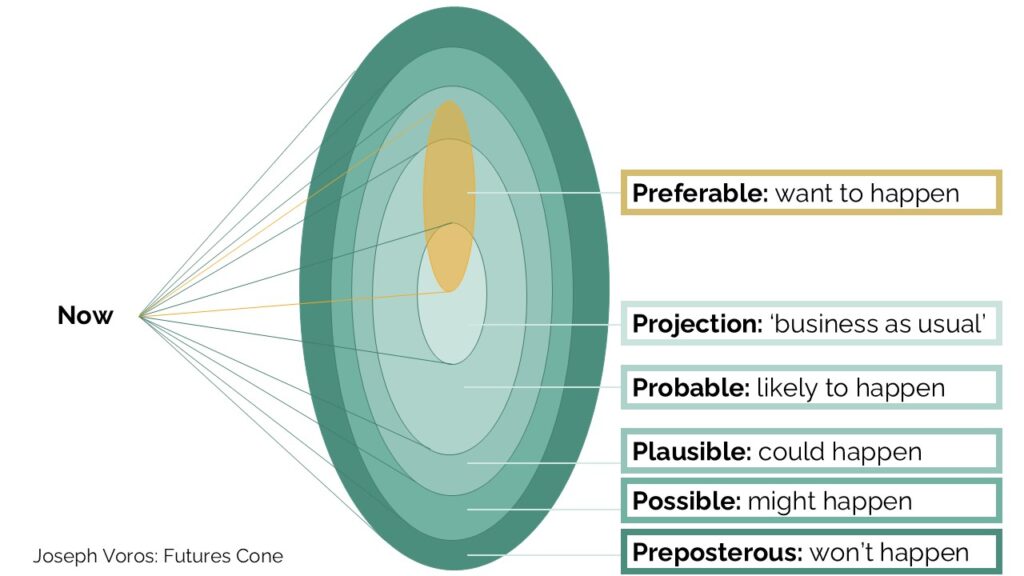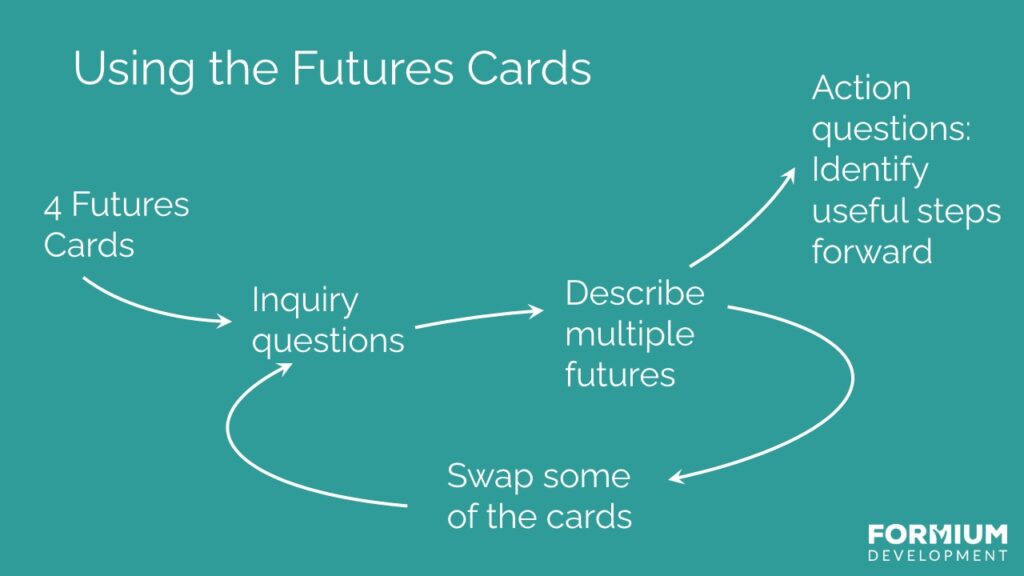We are famously poor at predicting the future.
In the 1950s, the view of the 2020s was all about jet packs, hover boards, moonbases, humanoid robots and flying cars. And while there’s progress on these technologies, we’ve not caught up with the promises of science-fiction.
And we are not just poor at predicting future technology. We’ve proven to be poor judges of social change, as we are influenced by our self-reference and hopes:
“The coming of the wireless [radio] era will make war impossible, because it will make war ridiculous.”
Guglielmo Marconi, 1912
… and also our assumptions and biases:
“Remote shopping, while entirely feasible, will flop – because women like to get out of the house, like to handle the merchandise, like to be able to change their minds.”
Time Magazine, 1966
All this means that when it comes to preparing ourselves for the future of our work and our careers, our imagination is often limited. We tend to either focus on a future which is largely a projection of current trends, or we are fixated by the future that we want to happen. And when we get one idea, it is hard to put it out of our mind and think of an alternative.
You can see this tendency in the Futures Cone, developed by Joseph Voros. The future is like shining a torchlight onto a wall. The further away the wall, the less light hits it – and as you move away from the centre of the beam, the clarity falls off. But Voros argues that we don’t spend enough time thinking about the outer edges, where the future is possible or even preposterous – and that’s where really disruptive change sits.

Let’s think about an example we all know – mobile phones… the first phones were huge with short batteries, limited functionality and restricted to the business world.
- It was reasonable to assume that in the future they would be smaller and more useful [projection].
- If they became smaller and cheaper, they would probably become more widespread, so there could be less need for traditional phone boxes [plausible].
- But if you were a manufacturer of compact cameras you would not have thought that in the near future mobile phones would add functionality that totally destroys your market [preposterous].
So when I had the opportunity to deliver a masterclass to high-potential, early-career civil servants recently, I split them into groups and dealt them some cards to help them see the future.
No, not tarot cards, but cards from my Futures Cards deck. I handed each group three cards about future change in technology, economics and either politics or the environment. And a chance card to make things even more interesting.

I asked them several Inquiry Questions:
- What would society look like in this future?
- What would people do for money?
- What would they eat?
- Where would they live?
- Who would have power?
Deep discussions followed, with different interpretations, ideas and considerations emerging rapidly.
I then swapped two of their cards for new ones, and asked them how society would be different with these factors changed.
In this way they developed futures that were richer and more varied than if they had imagined them unaided, or explored each idea singly. They were engaging with the possible and the preposterous, not the preferred and the projected. But that’s not the endpoint of this activity.
Then I asked the crucial Action Question:
What skills, knowledge or experience would you need to be successful in your career, that would apply to more than one of these different futures?
This is the value of exploring different futures – to identify actions that you can take now that will be helpful in whatever version of the future comes along.
On this occasion I also asked participants to imagine a range of potential futures just 3 years away – the end of their graduate development programme – and to decide on some steps they could proactively take now which will serve them and their careers, no matter which version of the future happens.

What future is on your cards?
This is an exercise I’ve used in universities, with leadership groups, managers and now civil servants, for strategy development, operational forecasting, and for career planning. In each case, they’ve identified common steps they can take now to prepare for multiple potential futures.
I add bespoke cards – both themes and content – to the deck to ensure they are relevant for the audience, but part of the value of the activity is being confronted with issues and ideas from outside your area of immediate concern.

I also tailor the Inquiry Questions and the Action Questions to ensure they help the group achieve the focus they want, and create a meaningful action plan.
If you want to know more about using the Futures Cards deck to examine how you and your team can prime yourselves for the future, click on the button below to get in touch.


